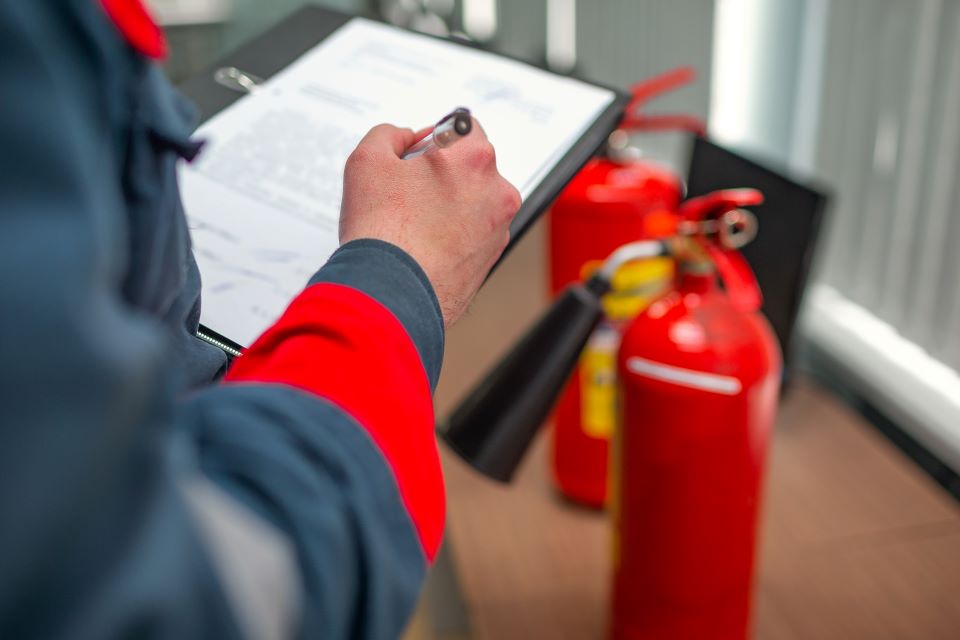The U.S. Department of Housing and Urban Development (HUD) has published its Final Standards Notice, including important changes and clarifications for the National Standards for the Physical Inspection of Real Estate (NSPIRE) regarding smoke alarms, carbon monoxide detectors, fire doors, sprinkler assemblies, and fire extinguishers.
Since the team here at The Inspection Group has been keeping you updated on all of the changes and developments to HUD’s NSPIRE standards, we’d like to offer a summary of these changes specific to fire safety and alarms.
Smoke Alarms: Increased Installation and Sealed Batteries Required
The new Smoke Alarm Standard incorporates prescriptive locations for the installation of smoke alarms as defined by the National Fire Protection Association (NFPA) Standard 72. This includes the need for a smoke alarm on each level of a property and inside each sleeping area. Although the NSPIRE Smoke Alarm Standard does not currently necessitate the use of sealed batteries, as of December 29, 2024, they will become a requirement, aligning with the Public and Federally Assisted Housing Fire Safety Act of 2022.
Despite concerns raised by some commenters about the potential cost of installing smoke alarms, HUD emphasized the importance of these devices for resident safety and that they are now required by federal law. The benefits and costs of this change are further detailed in the NSPIRE Final Rule and Regulatory Impact Analysis (RIA).
Carbon Monoxide Alarms: Statutory Requirements and Limitations
For carbon monoxide alarms, the Final Standard incorporates statutory requirements for HUD housing to be in compliance with chapters 9 and 11 of the 2018 International Fire Code (IFC). The Final NSPIRE Rule mandates that carbon monoxide detectors must be installed both in the “Inside Area” and the “Unit,” a change that sparked considerable discussion.
HUD clarified that carbon monoxide detectors are not required in classrooms as originally proposed, because the statute only requires detectors in units or in areas where installation can protect the unit from potential carbon monoxide sources outside the unit. There may be instances when a detector is needed due to a fuel-burning appliance or fireplace outside the unit, particularly if there are open communications to the unit or if an unventilated garage is attached.
Fire Labeled Doors, Sprinkler Assemblies, and Fire Extinguishers
Under the NSPIRE Final Rule, fire doors will only be inspected if they are already present in the property; HUD clarified that there is no new affirmative requirement for fire doors. Nonetheless, they are regarded as essential for resident safety. The requirements for inspecting fire doors, which include function and operability criteria, will be outlined in NSPIRE inspector training.
The Sprinkler Assembly Standard includes more detailed definitions of deficiencies based on discrete levels of observed conditions. Corrosion has been added as a separate deficiency in the Final Standard.
Tenant-owned fire extinguishers will not be subject to inspection under NSPIRE.
Overall, the HUD’s NSPIRE Final Standards Notice provides valuable updates and clarifications, focusing on enhancing fire safety measures for public and federally assisted housing to protect lives and minimize property damage.
For more information, training, and assistance navigating HUD’s NSPIRE inspection protocol, speak with an expert at The Inspection Group. We’ve got you covered for the entire rollout and adaptation to this new system.





